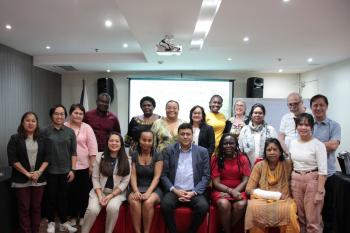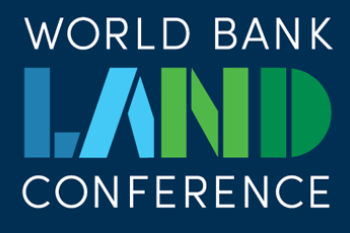Recommendation for the Inter-Agency Expert Group on SDGs (IAEG-SDG) meeting (11-14 November 2017, Manama, Bahrain)
Full implementation of the SDGs land rights indicators needed to ensure a successful Agenda 2030
In 2015, all countries committed to realize 17 Sustainable Development Goals (SDGs) by 2030 and monitor all targets. The Agenda 2030 strongly emphasizes the cross-cutting and central role of securing tenure rights to land and natural resources to eradicate poverty and hunger as well as to achieve gender equality and empowerment of women and, more broadly, sustainable development. Action on securing tenure rights is urgently needed in a world in which Indigenous Peoples and local communities – up to 2.5 billion women and men – hold and use more than 50% of the world’s land, but have secure tenure to just 10 percent. The situation of indigenous and rural women is especially dire as national laws rarely protect their tenure rights, despite the fact that they often bear disproportionate burdens related to poverty, food insecurity, climate change, and conflict.Without significant progress towards securing and protecting land rights of women, smallholders, Indigenous Peoples, pastoralists and local communities, the aspiration of the SDGs of leaving no one behind will not be achieved and most of the Sustainable Development Goals and Targets will remain out of reach.Fully implementing SDGs land indicators 1.4.2, 5.a.1 and 5.a.2 is absolutely critical. Their implementation will be a major stepping stone towards the success of Agenda 2030 and the realization of people-centred land governance. Measuring progress on securing tenure rights and women’s rights to land, will require robust, statistically sound and comparable methodologies that are designed to:
- Collect gender disaggregated data by ensuring that randomly sampled individuals are interviewed;
- Focus on tenure rights, including communities’ and Indigenous Peoples’ rights, rather than only on a narrower concept of ownership.
We - as longstanding organizations working to secure and protect tenure rights for women, smallholders, Indigenous Peoples, pastoralists and local communities and to realize people-centred land governance - fully support the work of the IAEG-SDG and the Custodian Agencies role to develop robust methodologies for monitoring land indicators in consultation with National Statistical Offices (NSOs), CSOs and other land actors. We commend the inclusive, highly participatory and robust multi-stakeholder approach that was adopted by the Custodian Agencies to develop the methodologies for indicator 1.4.2 (UN Habitat and World Bank) and indicator 5.a.2 (FAO). Thanks to the work of the Custodians Agencies and the support of land and statistical experts, including notably NSOs from all regions, both indicators now have statistically sound and robust methodologies that are fully consistent with the Voluntary Guidelines on Tenure Governance (VGGTs) agreed by all Member States at the UN Committee on World Food Security in 2012.
We strongly recommend and expect that, at its next IAEG-SDGs meeting, Members will decide to move indicators 1.4.2 and 5.a.2 from Tier III to Tier II. The information provided by Custodian Agencies on indicators' methodologies and data (which has already been collected in many countries across regions) demonstrates that both indicators should now be re-classified because they comply with the required criteria for Tier II indicators.The decision for reclassification of those indicators to Tier II is not only a technical issue but also a political decision. In fact, this decision will show the level of political will and commitment of governments to implement, monitor and report on the progress of land rights-related SDGs Targets. Supporting the re-classification of these indicators is crucial also because will enable governments to:
- Show their progress on securing tenure rights for all, leaving no one behind;
- Improve dramatically national policies and decisions on land by having access to timely, regularly collected and gender disaggregated data that will focus not only on land ownership but, more broadly, on tenure rights.
By: Global Land Indicators Initiative (GLII) Huairou Commission International Land Coalition (ILC) Landesa Oxfam Rights and Resources Initiatives (RRI) Information and contact: Everlyne Nairesiae, GLII, Everlyne.Nairesiae@unhabitat.org Katia Araujo, Landesa, katiaa@landesa.org Luca Chinotti, International Land Coalition, l.chinotti@landcoalition.org Marc Wegerif, Oxfam, marc.wegerif@oxfam.org Mino Ramoroson, Huairou Commission, mino.ramaroson@huairou.org


